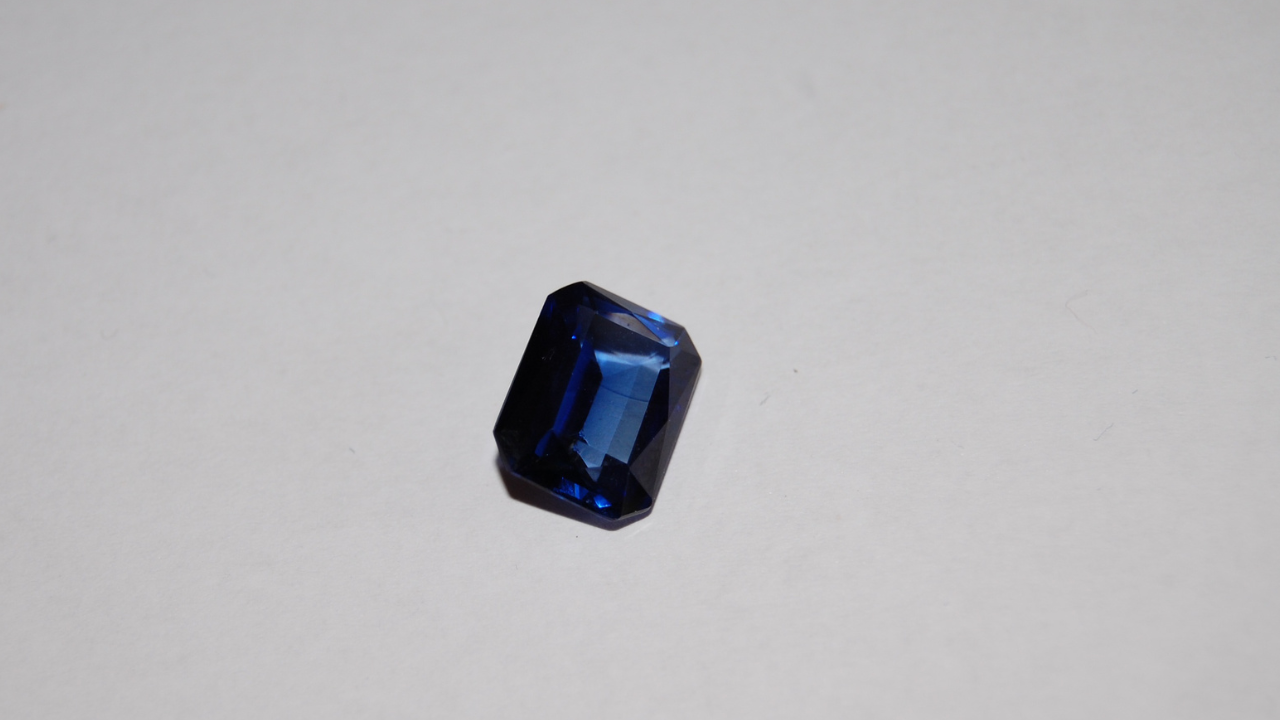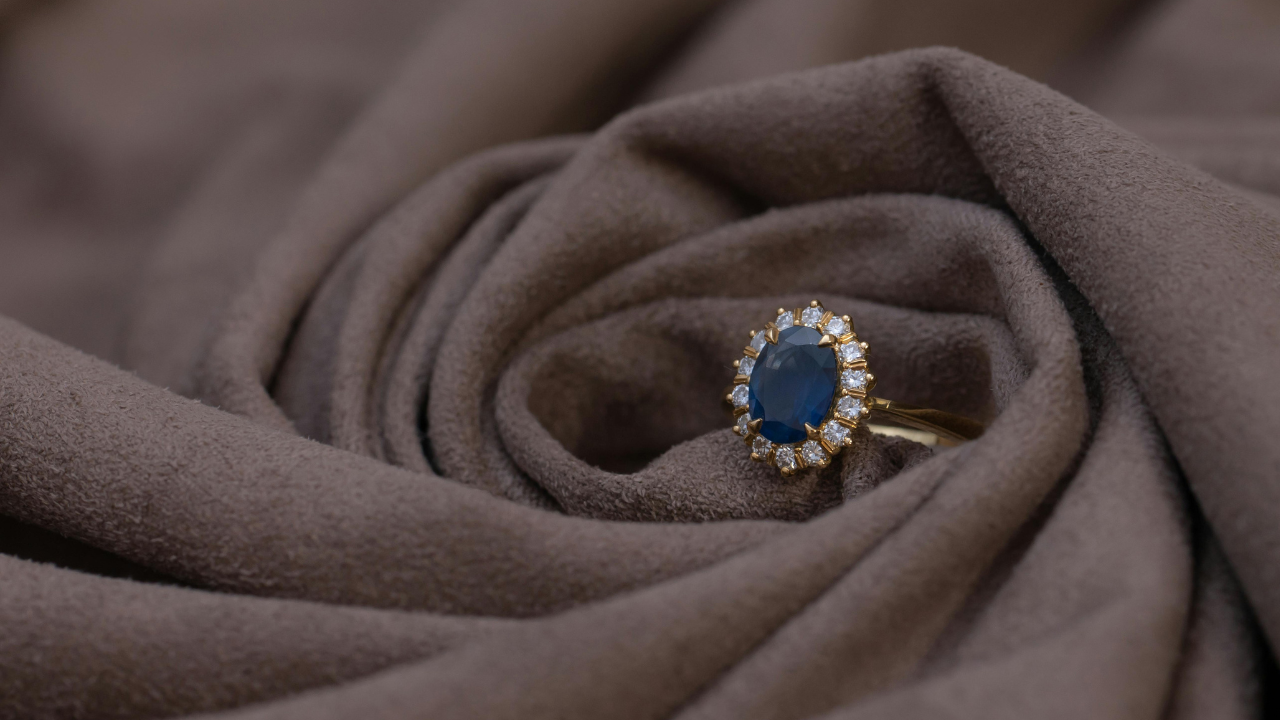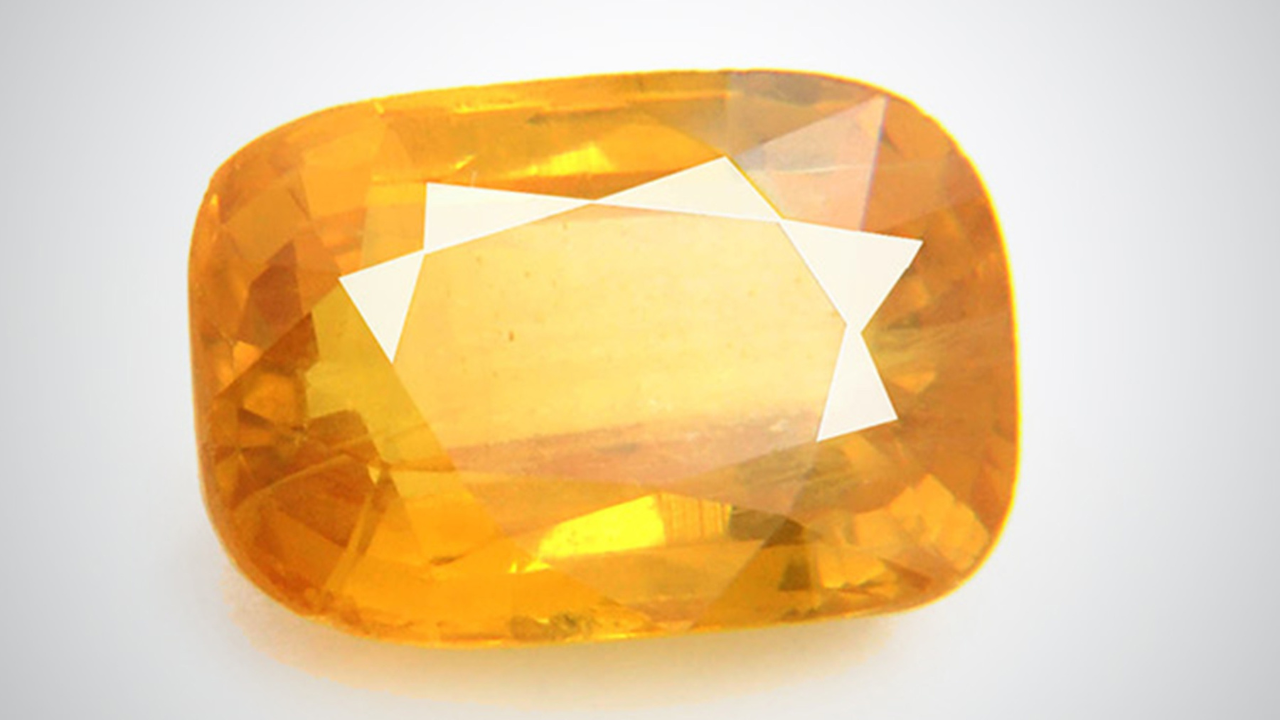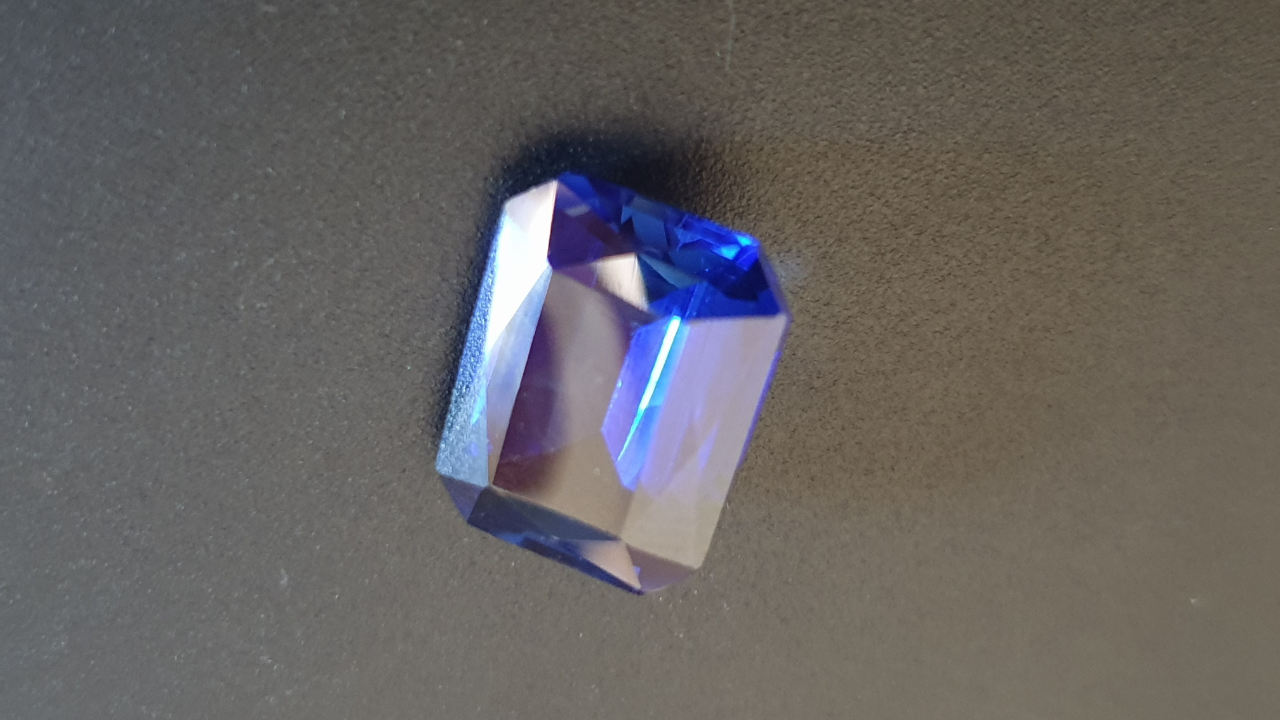The sapphire, September’s stunning birthstone, has fascinated people for thousands of years with its rich blue color and special meaning. More than just a beautiful gem, sapphires have been treasured by royalty, clergy, and now by anyone celebrating a September birthday. From its deep connection to wisdom and loyalty to its place in famous jewelry collections, the sapphire carries both beauty and meaning. This guide explores everything about this remarkable gemstone – from its rainbow of colors beyond blue to its connection with zodiac signs and chakras.
What is a Sapphire?
Sapphires belong to the mineral family called corundum, the same mineral that creates rubies. While many people picture a deep blue gem when thinking of sapphires, these remarkable gemstones actually come in nearly every color of the rainbow – except red (red corundum is called ruby). This range includes yellow, pink, purple, green, and even the rare and highly valued orange-pink “padparadscha sapphire.”

What makes sapphires special among gemstones is their durability. With a hardness of 9 on the Mohs scale, they’re second only to diamonds (which rank 10), making them perfect for everyday wear in rings and other jewelry that might face daily bumps and scratches.
The classic blue sapphire gets its color from small amounts of titanium and iron within the crystal structure. Other sapphire colors come from different elements – for example, chromium creates pink sapphires, similar to how it creates the red color in rubies.
Sapphire: The September Birthstone
Sapphire has been the official birthstone for September for hundreds of years. Those born in this month often feel a special connection to this gem, which represents wisdom, loyalty, and nobility. As summer transitions to fall, the deep blue of sapphire perfectly captures September’s clear blue skies and cooler temperatures.
September babies mostly fall under the Virgo zodiac sign (August 23-September 22), though some are Libras (September 23-October 22). For Virgos, who are known for their analytical minds and attention to detail, the sapphire’s connection to wisdom and clear thinking makes it a perfect match. The gem is thought to enhance the natural Virgo traits of intelligence and thoughtfulness.
The Rich History of Sapphire
The name “sapphire” comes from the Greek word “sappheiros,” which actually referred to lapis lazuli in ancient times. Throughout history, sapphires have been associated with royalty, wisdom, and divine favor.

In the Middle Ages, clergy wore sapphires as they believed the stones attracted heavenly blessings. Kings and queens prized these gems not just for their beauty but for their supposed protective powers. People believed sapphires could shield the wearer from harm, envy, and even poisoning – a real concern for royalty throughout history!
Sapphire Colors: Beyond the Blue
While blue is the most famous sapphire color, these versatile gems offer a rainbow of options:
- Blue sapphires range from light sky blue to deep, velvety blue. The most valued blue sapphires come from Kashmir and feature a cornflower blue color with a velvety appearance.
- Pink sapphires have grown in popularity for engagement rings as a unique alternative to diamonds.
- Yellow sapphires shine with sunny brightness and are associated with prosperity.
- Green sapphires offer a more affordable alternative to emeralds.
- Purple sapphires provide royal elegance with their rich hue.
- Padparadscha sapphires display a rare and highly valued orange-pink color resembling a lotus flower sunset. The name comes from the Sanskrit word for lotus blossom.
- Color-change sapphires show different colors under different lighting – blue in daylight and purple in incandescent light.

Each color carries its own symbolism and energy, giving September babies plenty of options beyond traditional blue.
Famous Sapphires Around the World
Some sapphires have become legendary for their size, beauty, or historical significance:
The Stuart Sapphire (104 carats) adorns the Imperial State Crown of Britain. Before that, it had a dramatic history of being stolen, recovered, and passed through royal hands.
The engagement ring that Prince William gave to Catherine Middleton, which previously belonged to Princess Diana, features a stunning 12-carat blue sapphire surrounded by diamonds. This famous ring sparked a trend for sapphire engagement rings worldwide.
The Star of Bombay, a 182-carat star sapphire, was given to silent film actress Mary Pickford by her husband Douglas Fairbanks Sr.
Miners occasionally discover giant sapphires weighing hundreds or even thousands of carats. In 2015, a miner in Sri Lanka discovered a blue star sapphire weighing 1,404 carats – valued at more than $100 million!
Sapphire in Color Psychology and Healing
In color psychology, blue represents trust, loyalty, wisdom, and confidence – all qualities associated with sapphires. The stone’s various colors each carry their own psychological benefits:
- Blue sapphires promote calm, focus, and mental clarity
- Yellow sapphires enhance optimism and self-confidence
- Pink sapphires nurture compassion and emotional healing
- Purple sapphires stimulate intuition and spiritual awareness
- Green sapphires encourage growth and renewal

For those interested in crystal healing, sapphire connects primarily with the throat chakra (blue sapphires) and third eye chakra (darker blue or indigo sapphires). These connections are said to:
- Enhance communication skills
- Promote speaking one’s truth
- Sharpen intuition and insight
- Deepen meditation practices
- Clear mental fog and confusion
Historically, people believed sapphires could cure eye problems, headaches, and even improve one’s overall health by reducing inflammation and fever. While we now approach these traditional beliefs from a more symbolic perspective, many people still find comfort and focus when meditating with sapphires.
Where Sapphires Are Found
Sapphires form in many locations worldwide, with each source known for particular qualities:
- Kashmir sapphires from India are legendary for their perfect cornflower blue color and velvety appearance. Though the mines are now mostly depleted, Kashmir sapphires command the highest prices at auction.
- Myanmar (Burma) produces rich, deep blue sapphires similar to those from Kashmir.
- Sri Lanka (formerly Ceylon) is famous for light to medium blue sapphires with excellent clarity.
- Thailand yields darker blue sapphires, often with hints of green.
- Madagascar has become an important source of fine blue sapphires in recent decades.
- Montana (USA) produces unique blue sapphires with a steel-like hue.
- Australia primarily yields blue-green and yellow sapphires.
- Cambodia has emerged as a source of beautiful blue sapphires in recent years.
Each origin gives sapphires subtle differences in color, clarity, and character that gem experts can identify.
Sapphire Jewelry and Care
With their outstanding hardness and durability, sapphires make excellent choices for all kinds of jewelry:
- Engagement rings and wedding bands
- Everyday rings that can withstand years of wear
- Classic stud earrings or dramatic drops
- Pendants and necklaces that draw attention
- Bracelets and bangles for a pop of color
When caring for sapphire jewelry:
- Clean with mild soap and warm water
- Use a soft brush to remove any buildup behind the setting
- Rinse thoroughly and pat dry with a lint-free cloth
- Store separately from softer gemstones to prevent scratching them
- Remove before harsh activities or exposure to chemicals
With proper care, sapphire jewelry can be passed down through generations, becoming treasured family heirlooms.
Conclusion
The sapphire, September’s beloved birthstone, offers more than just stunning beauty. Its rich history, rainbow of colors, and meaningful symbolism make it a perfect representation of September births. Whether worn as a necklace, ring, or other jewelry piece, sapphires connect the wearer to ancient traditions while making a thoroughly modern statement.
From the cornflower blues of Kashmir to the sunset orange-pink of padparadscha sapphires, these gems capture light, imagination, and meaning in their crystalline depths. For those born in September, wearing their birthstone is a way to carry the gemstone’s legendary wisdom, loyalty, and protective energies wherever they go – a truly special birthday blessing wrapped in a package of natural beauty.